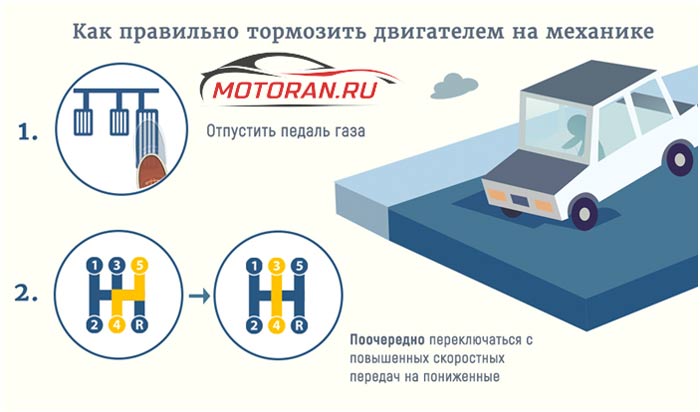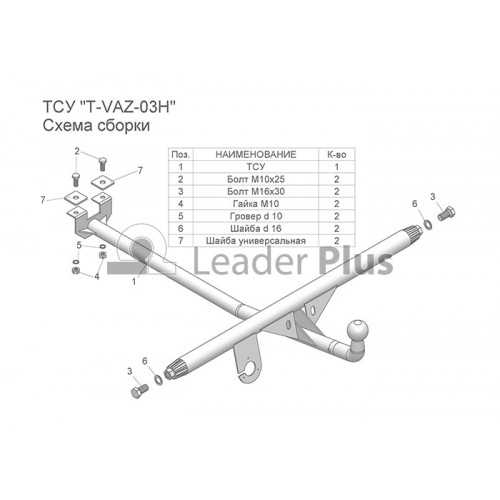
How to brake the engine? Can this be done in modern cars? Management
Content
Engine braking is an automotive fundamental to keep in mind. Many drivers do not take full advantage of this driving technique or apply engine braking incorrectly. It is also necessary to take a fresh look at this topic today through the prism of a modern car with an automatic transmission and computerized driving.
Engine braking is one of the main driving techniques of a solid driver. Theoretically, she does not hide any secrets. When we want to slow down a car, we don't need to immediately reach for the brake pedal. It is enough to switch to a lower gear, and the increased resistance in the transmission will allow you to gradually lose speed without wearing out the brake discs.
Rather, every driver knows this, as well as the fact that this technique is especially useful, if not indispensable, on descents in mountainous conditions. A long trip with your foot on the brake will inevitably cause the system to overheat and eventually stop working.
Engine braking can also be used when, for example, we are approaching a traffic light or in any other situation that requires us to stop - then we can gradually reduce speed by changing gears. In this way, we also save money, because in almost all modern engines, when we release the brake pedal and leave the car in gear while driving, no fuel is supplied to the cylinders. Thus, we go without the use of fuel. Over many years of vehicle use, these habits will bring measurable savings, and with the right car feel and learning skills, they will also increase driving pleasure and driving comfort.
However, engine braking also has some lesser known and sometimes negative effects.which with modern cars is becoming more and more. That is why it is worth refreshing your knowledge in this area.
How to effectively brake the engine?
This technique requires certain skills and foresight. First of all, you need to feel the length of the gears - in order to make the gear not too low, which will lead to a sharp increase in speed to a very high level and may result in the failure of any part of the mechanism. driving train. On the other hand, if the gear is high, the resistance generated by the engine will be insufficient and braking will not occur.
So how do you keep engine braking as smooth and efficient as possible? Gradual downshift. Let's start with those gear ratios that currently have little resistance and move on to those where the speed will increase and the speed will decrease.
When braking, the engine must act more forward than during normal use of the brake. If we know that the next section of the road will go steeper downhill, we should slow down earlier to a level where we can still keep the speed under control on the steep section with the help of the engine itself.
Engine braking: what are the risks?
Despite the many advantages, engine braking technology over the past decades, it has lost its popularity. At first glance, this can be blamed on the declining awareness of drivers who expect more and more automatic cars to do the thinking for them. However, the reality is perhaps a little more complicated.
Keep in mind that this technique is not suitable for all circumstances. First of all, use on roads with limited traction, such as those covered in rain or snow, requires very good vehicle control. Otherwise a sudden change in engine load can lead to skidding.
Therefore, manufacturers of new cars with engine braking are a little out of the way. Why? If we do this maneuver incorrectly, even the latest assistance systems find it difficult to get out of the resulting skid and drive the car again. Consequently, in the "new school" of automotive industry, drivers are strongly encouraged to using even simpler driving techniques.
Regardless of experience, the motor gearbox should be released and Depress the brake pedal immediately in an emergency. Here it is important to shorten the braking distance as much as possible and avoid more serious errors. However, some drivers, especially older ones, say that this is not always the right decision, because when braking with full force, the driver cannot control the front wheels and has no influence on the direction of travel. They need to be reminded that for several decades now, systems such as ABS and ESP have been coping with the above problems in such situations.
Among the arguments against engine braking, one can find another, for many serious. This method can limit the life of the dual mass flywheel. This relatively expensive and wearable item is located in the vehicle to reduce engine vibrations transmitted to the rest of the vehicle structure. Keeping the engine revving high and jerky maneuvers resulting in jerking are the activities that put the most stress on "double weight" and can lead to replacement if repeated regularly. The cost of this account will be much greater than the savings that can be obtained from the saved fuel or brakes.
Automatic engine braking - how to do it?
Finally, a small addition for those drivers who drive a car with an automatic transmission. In their case, engine braking is a simpler maneuver. Apart from some new automatic transmission models that will maintain the current gear on steeper descents (Volkswagen's DSG, for example), the desired gear can be selected by shifting into manual mode and lowering it using the lever or paddle shifters.
Some classic machines (especially in older cars) in addition to the positions R, N, D and P also have positions with numbers, most often 1, 2 and 3. These are driving modes that should be used on descents. They are selected so that the gearbox does not exceed the gear set by the driver.
On the other hand, in hybrids and electric vehicles, another letter appears instead of these numbers, i.e. Q. This mode should also be used on descents, but for a different reason: it is the mode of maximum energy recovery during braking, which increases the efficiency of battery charging.
